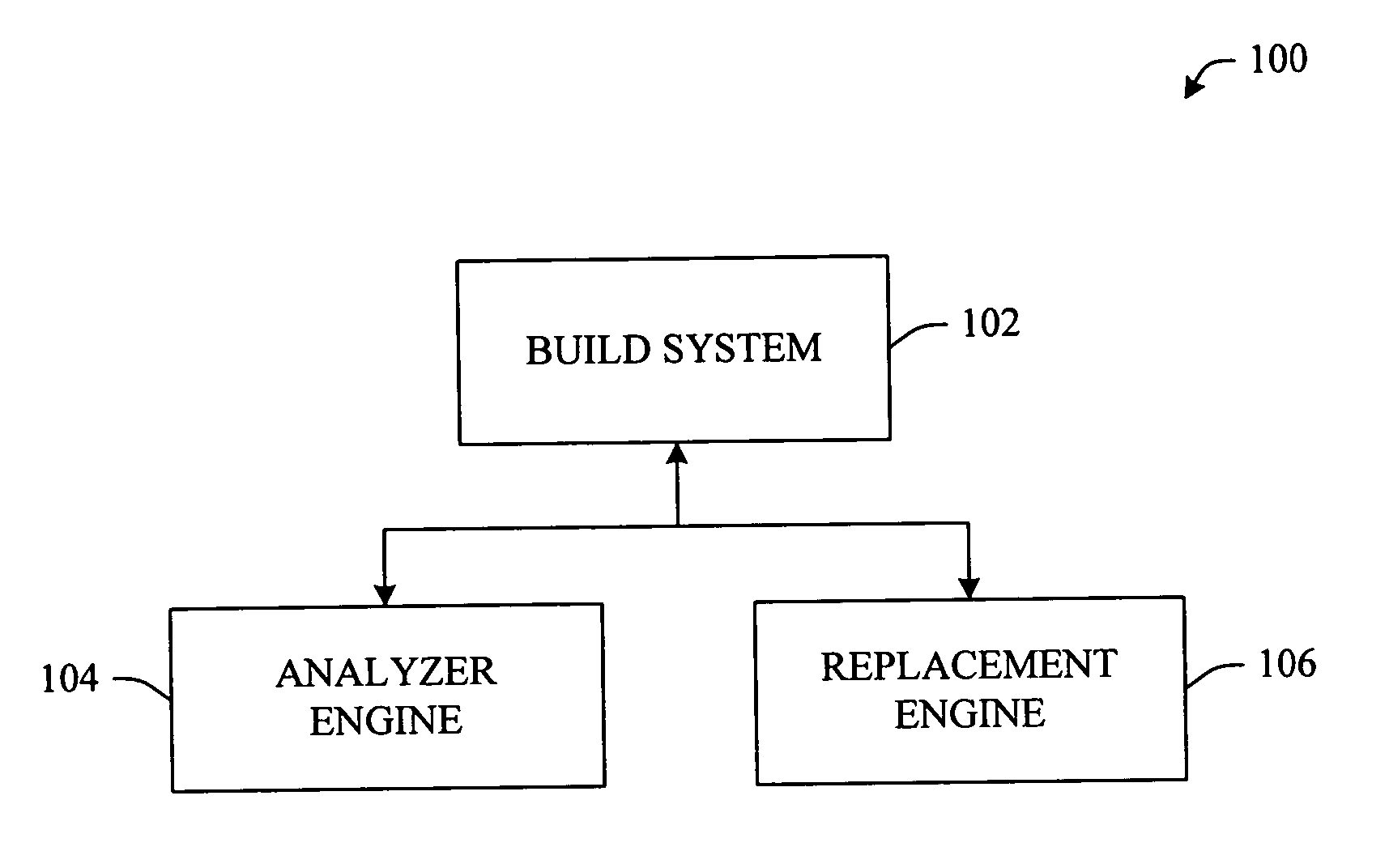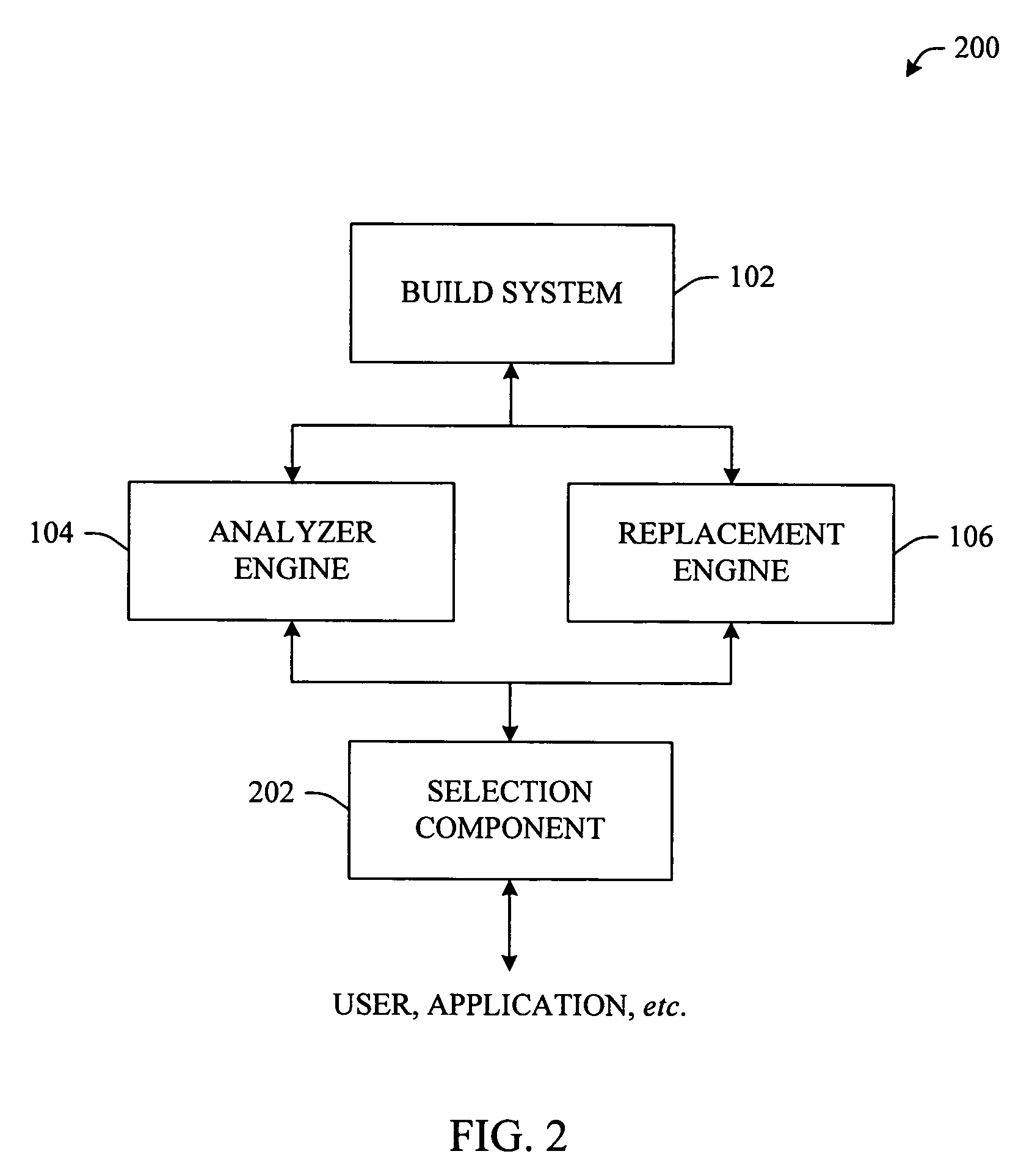Source code replacement via dynamic build analysis and command interception
a dynamic build and source code technology, applied in the direction of version control, instruments, computing, etc., can solve the problems of uncontrollable code generation, and inability to analyze complex build system rules, so as to facilitate the parsing of build system artifacts and facilitate the modification of a single modul
- Summary
- Abstract
- Description
- Claims
- Application Information
AI Technical Summary
Benefits of technology
Problems solved by technology
Method used
Image
Examples
Embodiment Construction
[0030] The following terms are used throughout the description, the definitions of which are provided herein to assist in understanding various aspects of the subject invention.
[0031] Module or Binary Module can also be referred to as an “absolute load module.” These modules can refer to binary files that can be loaded and executed on a target computer hardware component.
[0032] Code Libraries can refer to collections of object files in a portable unit of target machine code that can be added to or compose a binary module. The portable unit of target machine code is usually a file.
[0033] Compiler can refer to a tool that generates object files from programming language source code. In one example, a compiler can be software that translates a program written in a high-level programming language (e.g., COBOL, C, . . . ) into machine language. A compiler usually initially generates assembly language and subsequently translates the assembly language into machine language. A utility kn...
PUM
 Login to View More
Login to View More Abstract
Description
Claims
Application Information
 Login to View More
Login to View More - R&D
- Intellectual Property
- Life Sciences
- Materials
- Tech Scout
- Unparalleled Data Quality
- Higher Quality Content
- 60% Fewer Hallucinations
Browse by: Latest US Patents, China's latest patents, Technical Efficacy Thesaurus, Application Domain, Technology Topic, Popular Technical Reports.
© 2025 PatSnap. All rights reserved.Legal|Privacy policy|Modern Slavery Act Transparency Statement|Sitemap|About US| Contact US: help@patsnap.com



